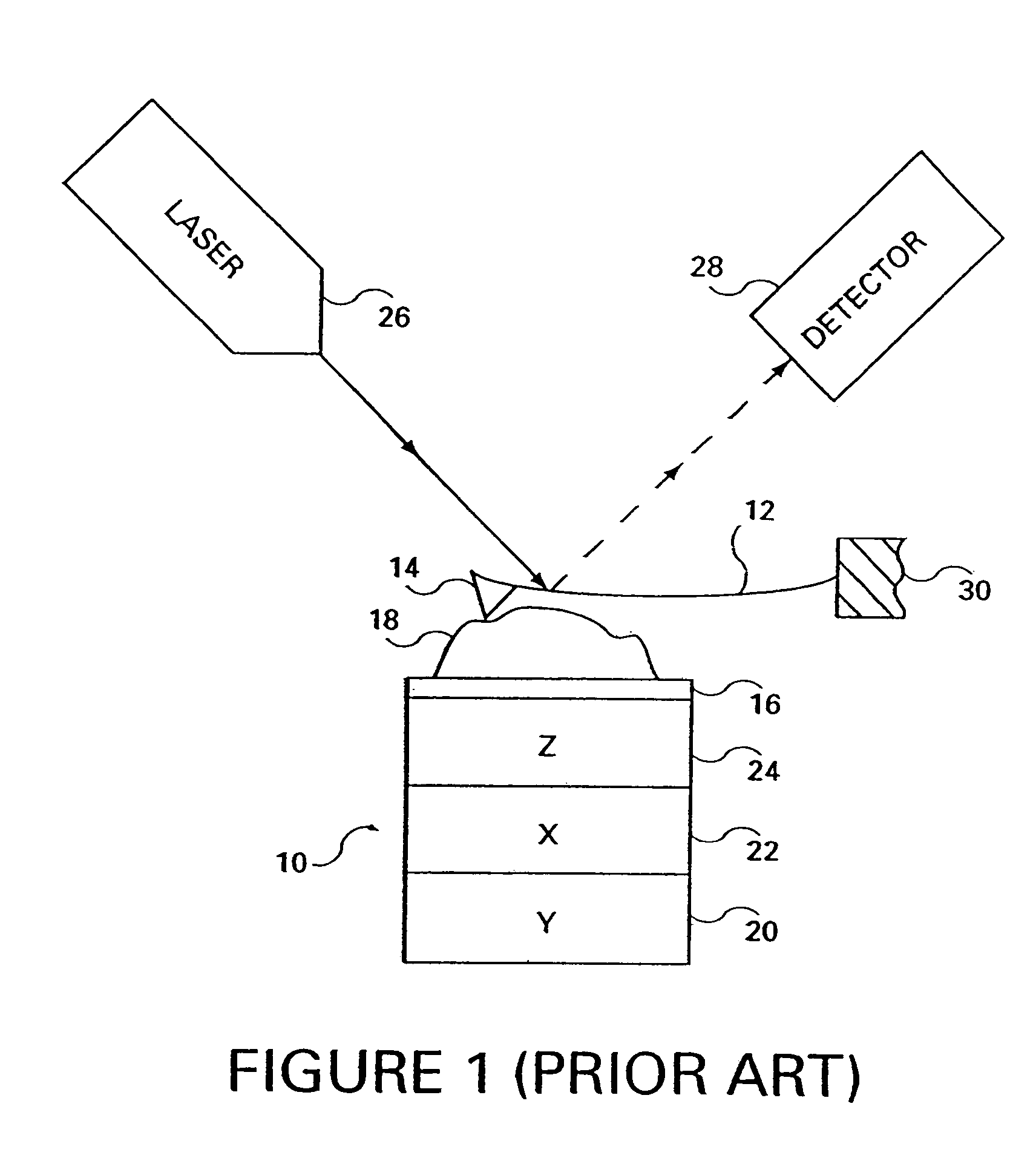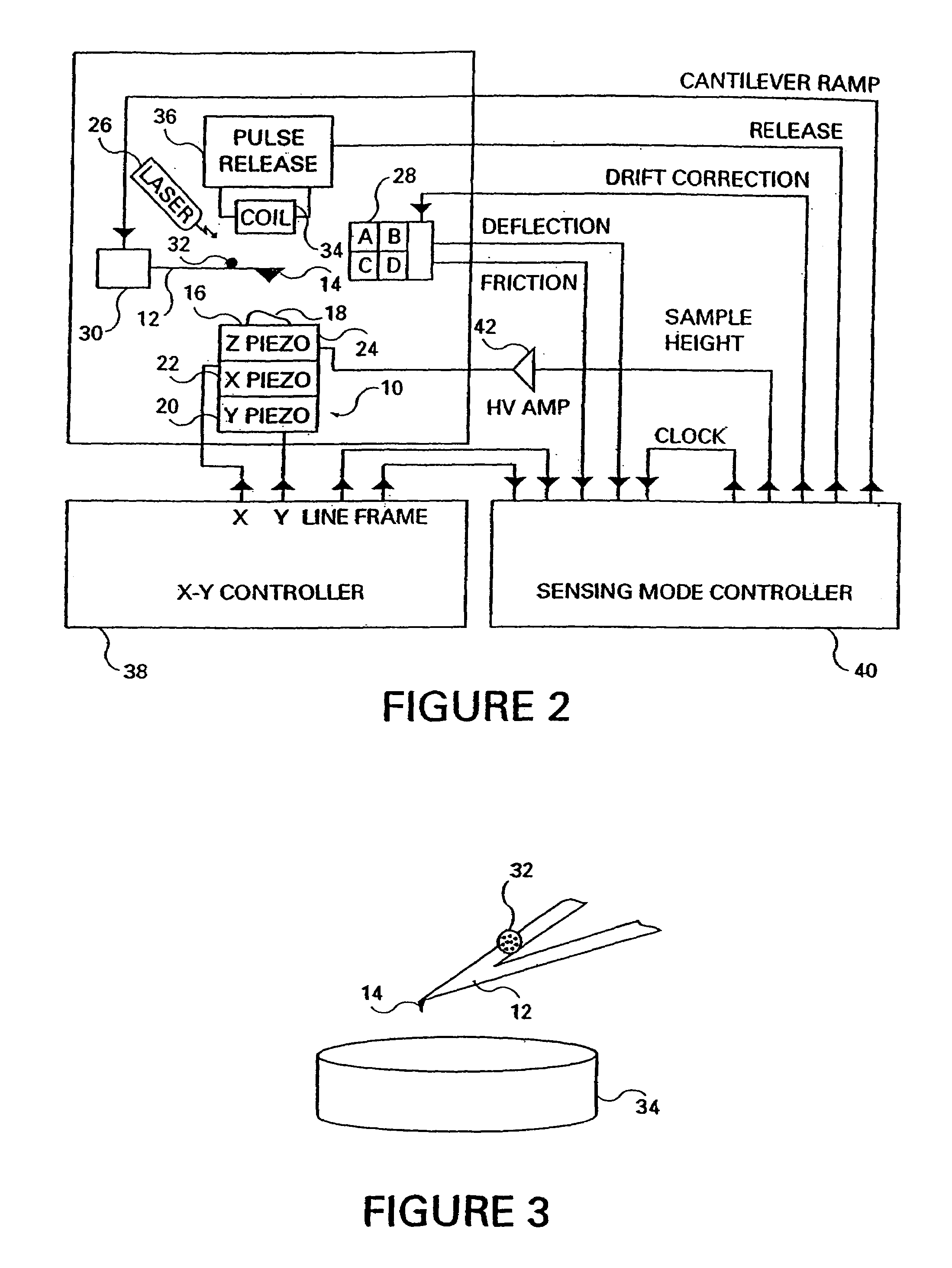Sensing mode atomic force microscope
a technology sensing mode, which is applied in the direction of mechanical measurement arrangement, mechanical roughness/irregularity measurement, instruments, etc., can solve the problems of inability to accurately and repeatable measurements, process cannot be observed in real time with electron microscope or x-ray crystallography techniques, and specimen surface, etc., to achieve the effect of improving operability and enabling the use of atomic force microscop
- Summary
- Abstract
- Description
- Claims
- Application Information
AI Technical Summary
Benefits of technology
Problems solved by technology
Method used
Image
Examples
Embodiment Construction
[0043]FIG. 2 is a block diagram generally depicting an atomic force microscope (AFM) formed in accordance with the present invention. The AFM includes a scanner 10 formed in a conventional manner having an X-piezo element 22, a Y-piezo element 20 and a Z-piezo element 24. The scanner 10 has an upper specimen surface 16 on which a specimen 18 to be measured is placed. The X, Y and Z piezo elements each change dimension, in a conventional fashion, in three mutually perpendicular axes, in response to a received control voltage signal. An X-Y controller circuit 38 is included. The X-Y controller circuit 38 controls the X-piezo element 22 and the Y-piezo element 20, generating a conventional raster scan of the specimen surface 16. Several commercially available controllers can provide this function. For example, the NanoScope E controller, manufactured by Digital Instruments, Inc. of Santa Barbara, Calif. is suitable for this application.
[0044]A sensing mode controller circuit 40 is also...
PUM
 Login to View More
Login to View More Abstract
Description
Claims
Application Information
 Login to View More
Login to View More - R&D
- Intellectual Property
- Life Sciences
- Materials
- Tech Scout
- Unparalleled Data Quality
- Higher Quality Content
- 60% Fewer Hallucinations
Browse by: Latest US Patents, China's latest patents, Technical Efficacy Thesaurus, Application Domain, Technology Topic, Popular Technical Reports.
© 2025 PatSnap. All rights reserved.Legal|Privacy policy|Modern Slavery Act Transparency Statement|Sitemap|About US| Contact US: help@patsnap.com



